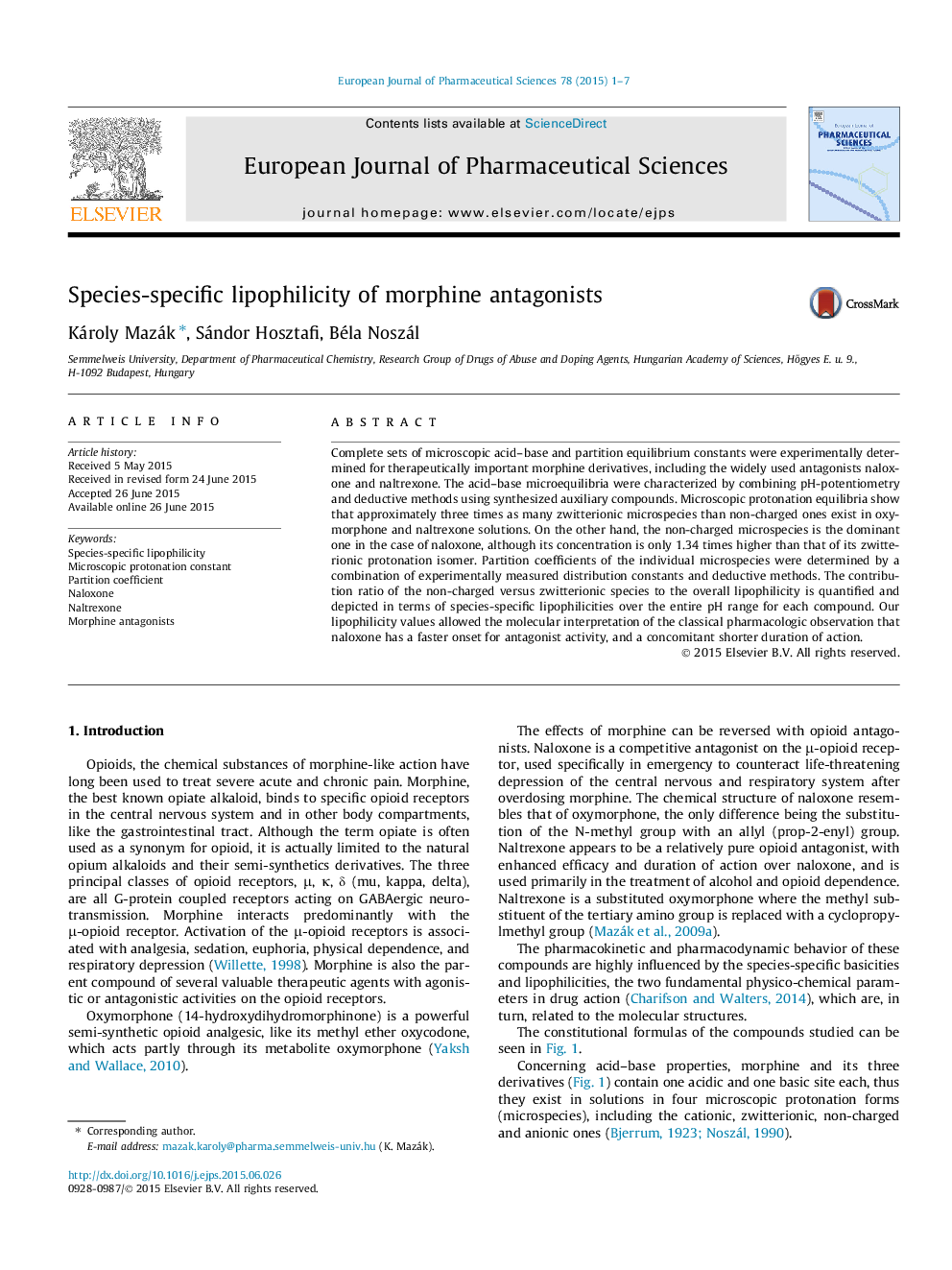| Article ID | Journal | Published Year | Pages | File Type |
|---|---|---|---|---|
| 2480187 | European Journal of Pharmaceutical Sciences | 2015 | 7 Pages |
Complete sets of microscopic acid–base and partition equilibrium constants were experimentally determined for therapeutically important morphine derivatives, including the widely used antagonists naloxone and naltrexone. The acid–base microequilibria were characterized by combining pH-potentiometry and deductive methods using synthesized auxiliary compounds. Microscopic protonation equilibria show that approximately three times as many zwitterionic microspecies than non-charged ones exist in oxymorphone and naltrexone solutions. On the other hand, the non-charged microspecies is the dominant one in the case of naloxone, although its concentration is only 1.34 times higher than that of its zwitterionic protonation isomer. Partition coefficients of the individual microspecies were determined by a combination of experimentally measured distribution constants and deductive methods. The contribution ratio of the non-charged versus zwitterionic species to the overall lipophilicity is quantified and depicted in terms of species-specific lipophilicities over the entire pH range for each compound. Our lipophilicity values allowed the molecular interpretation of the classical pharmacologic observation that naloxone has a faster onset for antagonist activity, and a concomitant shorter duration of action.
Graphical abstractFigure optionsDownload full-size imageDownload high-quality image (121 K)Download as PowerPoint slide
